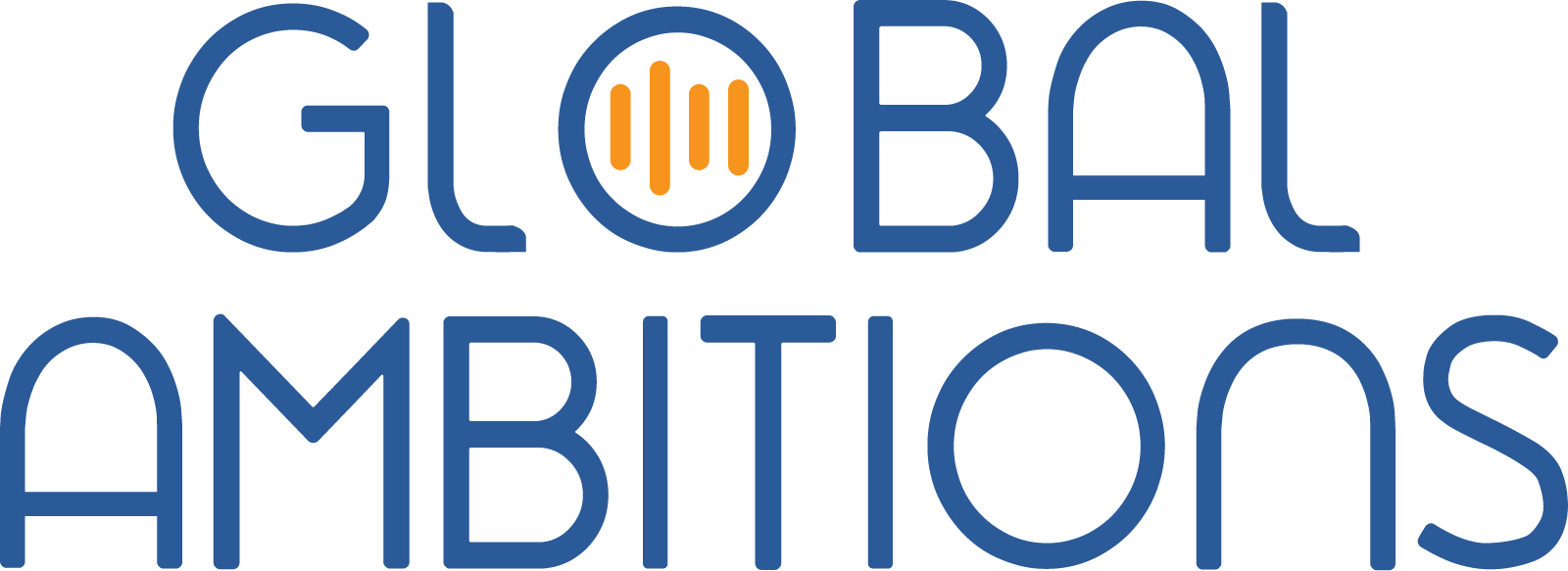With Minette Norman, Transformational Leadership Consultant
Below is a full transcript of our recording session with Minette.
Antoine Rey 0:45
Hello, I’m Antoine Rey, and I will be your host today for this global ambition podcast episode. My guest today is Minette Norman. Minette is a consultant at minettenorman.com. Today the topic is transition above localization. Minette, welcome to the program.
Minette Norman 1:04
Thank you, Antoine.
Antoine Rey 1:05
And maybe you can give us a quick background about your journey, what you’ve been doing in this industry and where you worked at.
Minette Norman 1:13
Certainly. So I spent 30 years in the software industry and just left recently. I got started as a technical writer, and then did a lot of technical writing for about 10 years and then moved into leadership positions. I spent 20 years at Autodesk starting out as a writer, ending up as a VP of engineering, and in between spending a lot of time on globalization and localization. And then I left about a year and a half ago and decided to start my own consulting business focused on inclusive leadership and teams, because that was something I saw that was often lacking places that I worked, and I really wanted to help other companies do better.
Antoine Rey 1:52
And that’s a very interesting journey I think for our listeners to try to understand what’s the sequence of events, you know, because I think a lot of them will aspire to become leaders, outside of localization, if I may say so. So what’s the sequence of events from being part of the globalization team and leading that globalization team to become VP of engineering of a very engineering-driven organization that is Autodesk.
Minette Norman 2:20
Yeah, Autodesk certainly was very engineering-driven when I was there. So I when I started in the globalization localization team I started as a manager of a small engineering team. And over time, I took a series of increasing responsibility leadership positions, and then ultimately I took over that department. And when I took over the department, it had gotten a reputation for being like a black box where no one knew what happened in the department, and a lot of money was spent. And the executive staff was very much aware of the high cost of localization but they didn’t understand what went on behind the scenes.
Minette Norman 2:59
And my predecessor had been very much about when we take on new projects, and we’re always taking on new projects, we’re going to add resources and so we had a really large team. And it wasn’t scalable, and you know the company was growing quite a bit we were doing a lot of acquisitions, and we couldn’t just keep adding headcount and resources and money to the department and so my emphasis in leading that department was really about first of all being very transparent about how the money was being spent. And not having it be secretive, and communicating like crazy to my counterparts in the engineering teams product management and then to the executive staff saying this is what we’re doing. These are some choices you can make. I’m not making the decisions on your behalf. This is really a partnership and just continually explaining what we were doing so that it was not this dark mystery.
Minette Norman 3:52
And then at the same time what I had to do was really scale back on our cost structure. And that meant having a smaller team. I did have to do layoffs, but it wasn’t you know it wasn’t about performance. It wasn’t about we’re going to get rid of the low performers, it was really a strategic decision about what do we want to keep internally. What is the value we can bring to the company, versus what can our localization and vendor partners do that we can outsource? And so we made a really clear decision. We’re gonna outsource all of this work. And it was a lot of our work. We’re going to find strategic partners we can work with. And we’re going to keep strategic and technical work internally because that is where we will add value to Autodesk
Antoine Rey 4:35
At that stage then there’s a lot of evangelizing, of building the sphere of influence with various different leaders as well as establishing, probably already at that stage, a level of trust and involvement with the engineering team and other teams.
Minette Norman 4:51
Yeah, absolutely. I mean one of the things was that localization globalization had been sort of a separate department. That didn’t work very close… I mean we worked with dev teams, but we didn’t have as close a partnership as we could have. And so one of the ways that we really established I think credibility and good relationships with the development team to the English development teams, is by showing how much we can help them in terms of, you know, internationalization.
Minette Norman 5:20
So a lot of native English developers didn’t know much about internationalizing the software and we would often get acquisitions, where they had been a startup company and they had been thinking you know US only, English only, and suddenly they wanted to go international, or Autodesk said we need to go international. And we inherited a codebase that was completely unlocalizable. You know, hard-coded strings and things that. Just no one had thought of ever going into multiple languages.
Minette Norman 5:47
So one thing we did is we actually embedded our internationalization engineers in the dev teams and helped them actually do the work of internationalizing their software and that was one way we really established, first of all, very trusting relationships with the development teams. They initially were a little reluctant to have some other engineers come in and get into their codebase. But once they saw that these engineers really knew their stuff and they were not going to mess up the code but instead they were helping, there was just this new respect and this new good, you know, really trusted partnership between the localization engineers and, and the dev team.
Minette Norman 6:26
And you know the other thing I think that was really a way we established credibility with the engineering teams is, we, on our own, were working on machine translation solutions and we were in many ways leading the industry in developing statistical MT back when that was the thing. And so our dev teams were really starting to understand that there was great technology expertise sitting in this localization globalization internationalization team, and it wasn’t just you know a bunch of people pushing files around, and so I think that very much helped raise our stature in the company, and our great relationships with the development teams and that was a really good give and take. So I think from a technical perspective of a company that cares so much about engineering rigor that was one way that we really established a great reputation.
Antoine Rey 7:15
That was the first stepping stone and somewhat like a lateral move there but I presume you also had to go upstream into different people to influence the rest of the organization and transform really what was localization.
Minette Norman 7:31
Absolutely and that I found because as I was leading the department at that time, that was a huge part of my work. You know the engineers could deal with the engineers, but I really had to deal with the executive staff because they were the ones that honestly… this is one of the things I joke about now, though when I took over the department the C staff was really considering, “Should we just outsource the entire department”. It’s so expensive. Why can’t we just get some vendor to do it all? And that was a real consideration and so I had to prove why this department was worth keeping.
Minette Norman 8:02
And I always joked about it was like in the Lord of the Rings that the Eye of Sauron was on localization. And we had to get out from the danger of being completely destroyed. So, how I did that was really to start a communication cadence with them. I would do quarterly reports to the C staff, but there were a group of like four SVPs who were in all of our product groups. And so every quarter I set up a meeting with them. And if they were not available for a meeting I sent them sort of a newsletter. This is what we did for your division. This is how we spend your money. These are the products we released. These are the quality reports. And I just kept being very diligent about communication because I wanted them to understand we had nothing to hide.
Minette Norman 8:44
We had a lot of good things to share. I shared you know the technology innovations that we were working on like MT and a huge amount of automation, and they started over time… you know it took time, always to establish trust takes time, but over time they started to see that, no, we were not just a cost center where money went in. But that we were really enabling the international success of the business. And we were doing it in clever ways, in innovative ways, and in efficient ways. And so one of the things I had to show was productivity going up with costs going down.
Minette Norman 9:17
And I had some fabulous graphs that just kept showing that we were getting more and more efficient, quality was not suffering, costs were going down. And so at some point, there was one day where I presented that graph to my SVP and he said to me and this is multiple years into the journey, he said to me, “You know what, I think you can stop showing me this graph, because I think now we should be looking at other things you’ve proven your efficiency”, but that took multiple years and multiple quarters and, you know, the productivity going up, and the costs coming down.
Antoine Rey 9:49
So clearly at that stage, you’ve established some level of trust and reputation within the organization. So what is the transition then to actually leading a worldwide team of engineers for Autodesk.
Minette Norman 10:03
It was a funny way it happened so localization at the time reported into the VP of engineering. So my boss was the VP of engineering. And I was traveling… I was in Switzerland with our team in Switzerland for work, and he sent me an email and said, I am going to be transitioning out of this role. I’m going to do something else in the company. And it was just this moment in time when I said, I think I’m going to apply for that position. You know I didn’t even give it a ton of thought but I knew him, I knew what he did and I’d certainly been working closely with him. I thought I think this is something I could do.
Minette Norman 10:37
And what he told me is that the SVP was looking for someone who could be transformational in engineering. Well, that’s what I’ve been doing for the last five years, so I applied for the job. And when I got back to the US I met with our SVP. And he said, “Well you know, I know you’ve got a great track record you’ve obviously been a really transformational leader for localization and globalization, you have a good track record for communication and for leading teams.” And he said, “but you know, you’re not an engineer. You were never someone who was doing the coding and so that’s sort of a strike against you. And you know it’s a boys club, and so you’re a woman coming into this and are you really going to be able to get the traction and the respect of the engineering leaders in the company” which was very male at the time.
Minette Norman 11:25
And so, I didn’t get the job right away. What he decided was that he wanted to do a trial period so that I would try out the job and I would see if it was a fit. And he would see if I was a fit for the job and so I did the job for 90 days in an acting VP role. And during that time I had to meet with all the engineering leaders in the company and see if they really had confidence in my abilities to do the job.
Antoine Rey 11:51
And why do you think at that stage, that organization, beyond the gender equality side of things, a very engineering-driven organization, you would think they might hire someone for the job that has a grant in leading engineering teams. But in this case, they went with someone that had no background in leading a development team, but more a very strong localization background.
Minette Norman 12:13
Right. And it is surprising. And I think, you know, in retrospect when I look at Amar Hanspal who was the SVP at the time, he very much recognized that Autodesk at the time was going through a huge transition. We were going from being a desktop software business to a SaaS-based organization. And the way we develop software really needed to change and become modernized and not be stuck in the past and so what he was looking for was someone who thought differently. And I think that’s why he saw me as a great candidate for the role because I wasn’t married to the ways of developing software. But you know the company was 30 years old already at that point. And so I wasn’t married to the past, because I had never been a software developer. He had seen that I was comfortable challenging the status quo. And that was what he was looking for.
Minette Norman 13:05
He wasn’t looking for incremental change. He was looking for someone who could really look at things very differently and so he took a risk, for sure he was taking a risk, and I think that’s why he gave me the 90-day trial. He wanted to make sure this was not a huge mistake right? Obviously, and yet what was very interesting is that the engineering leaders in the company, also the reason they supported me as they said, “We do need something different. We’re bringing a different perspective, and you bring up big picture thinking. You don’t go straight into the details of, let’s look at the code. And, you know, let’s look at the nitty-gritty details.” I definitely kind of read that more strategic or just broader picture thinking and so that’s how I got the job.
Minette Norman 13:50
And then of course the way I approached the job was very different than a traditional engineer would have approached the job I’m sure because I looked at it, not so much as a technical challenge although there were definitely technical challenges, but then it was really a behavioral and cultural change that the company needed to go through.
Antoine Rey 14:07
I can imagine that at that stage that cultural change and the requirement for empathy and different leadership traits coming into play big time.
Unknown Speaker 14:17
Right. So one of the problems that we… that I inherited, or that we all were experiencing, was that it was a company that had grown over 30 years largely through acquisition. And unlike some companies, Autodesk did not try to do a really strong integration of all of those different acquisitions. So what we had were silos across the company where each team did their own thing they picked their own tools they behaved in the way that whatever that acquired company behaved in. And so, suddenly you had a company that was trying to develop really a cohesive suite of software that felt like to our customers that it came from one company but with everyone doing their own thing that was pretty much impossible.
Minette Norman 14:58
And so my goal was to get people to start collaborating and to start reusing one another’s designs or code or learnings instead of just reinventing the wheel in every silo and that meant communicating differently. You know, really being open to other points of view. And that’s when I started getting very interested in human behavior, whether it was collaboration, communication, empathy, diversity of thought, all of that, I did a lot of research on, because that was what we needed. We needed people to start embracing different points of view.
Antoine Rey 15:31
Well, Minette, thank you very much. This is an inspiring story, thank you so much for joining us. And I am sure we will be seeing a lot more of Minette Norman consulting over the next few years.
Minette Norman 15:41
Thanks so much, Antoine It was nice to talk to you today.





